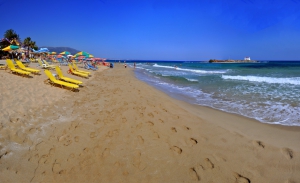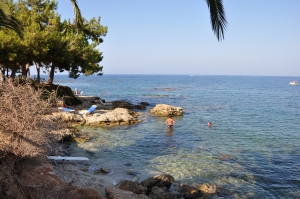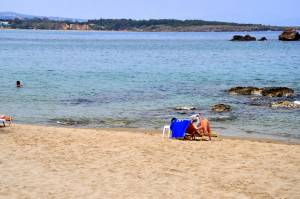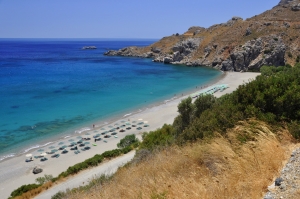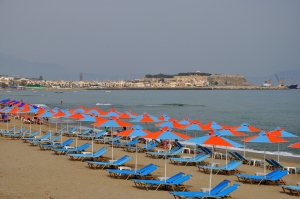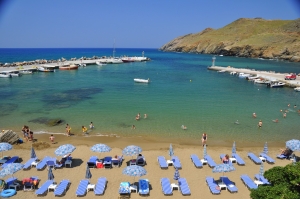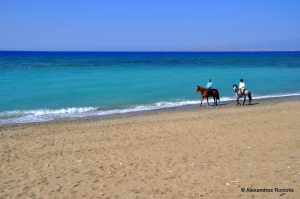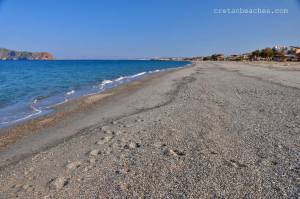The beach of Malia is the eastern part of the vast beach (6km length) starting from Stalis. It is a wide beach with fine sand and shallow waters. It is so crowded that there is no space between the sunbeds to fit a pin! Here you can find whatever comfort you ask.
The Coves of Hersonissos are located 27km east of Heraklion, starting from Cape Sarandaris and continuing to the east till the harbour of Hersonissos. They are really beautiful beaches with calm waters, since Cape Sarandaris protects them from the northwest winds.
The main beach of Nea Chora is very well organized, with several amenities nearby. It is a nice sandy beach, with rocks in some places. Nea Chora is ideal for those that do not want to leave the city centre.
It is actually the last beach of the vast beachfront of Plakias, called Yialia, which starts at Shinaria, several kilometers away. Unlike the true meaning of the name (the Latin word suda means narrow passage), the bay of Souda is quite large.
The sandy beach of Rethymno is located just 1km east of the city centre, next to the Venetian port. It's a lovely beach with golden sand and crystal clear shallow waters, very well organized and close to all amenities of the city.
Panormo is situated about 20km east of Rethymno, in the region of Milopotamos. It is a tranquil resort, which has met a fast development in recent years, without however losing its traditional face. The wild beauty of the pure Cretan landscapes, the picturesque village, the beautiful beaches, and easy access, have contributed to this development.
Ammoudara is a long beach which starts 1km west of the center of Heraklion and reaches the mouth of the river Almyros, 7km on the west. Ammoudara is today a suburb of Heraklion, with thousands of visitors every year, mainly because of the vast beach.
The seaside village of Platanias is located 11km west of Chania. The wider area has faced a great development during the last decades and now is actually a suburb of Chania. The village is built on a hillside with fantastic view. During summer nights, the great clubs in the area host thousands of people, both Greeks and foreigners, who dance until dawn.











